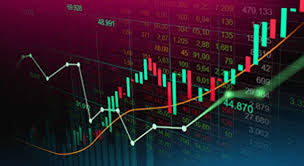
Forex trading, also known as foreign exchange trading, is the process of buying and selling currencies on the foreign exchange market. It is one of the largest financial markets in the world, with a daily trading volume that exceeds $6 trillion. For those looking to enter this dynamic field, understanding the fundamental concepts is essential. This guide aims to explain the basics of Forex trading and provide insights that can help traders navigate the complexities of the market. If you’re looking for a dependable platform to start your trading journey, consider visiting forex trading explained FX Trading UZ.
What is Forex Trading?
Forex trading involves the exchange of one currency for another at an agreed price. The goal is to profit from changes in currency value. The Forex market operates 24 hours a day, five days a week, and facilitates the trading of various currencies from across the globe. Major currency pairs like EUR/USD and USD/JPY are commonly traded, but there are numerous other currency pairs available, including exotic options.
The Basics of Currency Pairs
Currencies are always quoted in pairs, which means that when you buy one currency, you are simultaneously selling another. For example, in the currency pair EUR/USD, the Euro is the base currency, and the U.S. dollar is the quote currency. If the EUR/USD pair is trading at 1.20, it means that one Euro can be exchanged for 1.20 U.S. dollars. Traders can speculate on whether the base currency will appreciate or depreciate against the quote currency.
Understanding Forex Quotes
Forex quotes can be expressed in two ways: direct and indirect. A direct quote shows the value of one unit of the base currency in terms of the quote currency. An indirect quote, on the other hand, shows how much of the base currency is needed to purchase one unit of the quote currency. Understanding how to read these quotes is crucial for making informed trading decisions.
Types of Forex Orders

There are several types of orders that traders can use to manage their trades in the Forex market:
- Market Order: An order to buy or sell a currency pair at the current market price.
- Limit Order: An order to buy or sell a currency pair at a specified price or better.
- Stop-Loss Order: An order to close a trade at a specified price to limit potential losses.
- Take-Profit Order: An order to close a trade when it reaches a specified profit level.
Leverage and Margin in Forex Trading
One of the attractive features of Forex trading is leverage, which allows traders to control larger positions with a relatively small amount of capital. For example, with a leverage ratio of 100:1, a trader can control $100,000 worth of currency using only $1,000 of their own money. However, while leverage can amplify profits, it also increases the risk of significant losses. It’s crucial for traders to understand how margin works and manage their leverage carefully.
Fundamental and Technical Analysis
Traders use two main types of analysis to make trading decisions: fundamental analysis and technical analysis.
Fundamental Analysis
Fundamental analysis involves evaluating the economic, social, and political factors that can influence currency values. Key indicators that traders monitor include interest rates, employment figures, GDP growth, and inflation rates. Economic reports and news releases can have a significant impact on currency prices, making it essential for traders to stay informed.
Technical Analysis

Technical analysis, on the other hand, focuses on price patterns and market trends. Traders use charts and various indicators to identify potential entry and exit points for their trades. Popular technical indicators include moving averages, relative strength index (RSI), and Fibonacci retracements. Learning to read charts and understand technical indicators is critical for successful trading.
Risk Management in Forex Trading
Risk management is vital for long-term success in Forex trading. Traders should establish clear risk-reward ratios, set stop-loss orders to limit losses, and avoid risking too much of their capital on a single trade. A common rule of thumb is to risk no more than 1-2% of your trading capital on any single trade. Proper risk management helps protect your account from significant drawdowns and allows for sustainable trading.
Developing a Trading Strategy
A trading strategy is a set of rules that a trader follows to determine when to enter and exit trades. Successful traders often develop a strategy based on their analysis, risk tolerance, and trading goals. Common trading strategies include day trading, swing trading, and scalping. Each strategy has its own set of advantages and disadvantages, so it’s essential for traders to understand what works best for their individual situations.
Using a Demo Account
Before committing real money to trading, it is highly recommended to practice with a demo account. Most brokers offer demo accounts that allow traders to use virtual currency to test their strategies in a risk-free environment. This practice helps traders familiarize themselves with the trading platform, practice their skills, and refine their strategies without financial risk.
Conclusion
Forex trading offers exciting opportunities for those willing to dedicate the time and effort to learn the intricacies of the market. While it can be profitable, it also carries a high level of risk. Understanding the basics of Forex trading, including currency pairs, market orders, analysis methods, and risk management techniques, is essential for achieving success. Whether you are just starting or looking to improve your trading skills, education and practice are key components in your trading journey. As you embark on this journey, always remember to trade responsibly and keep learning.